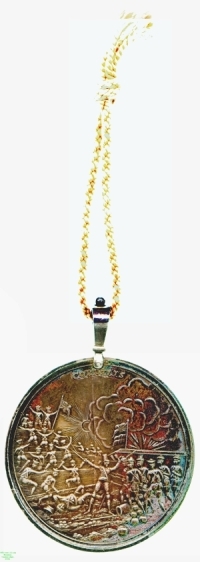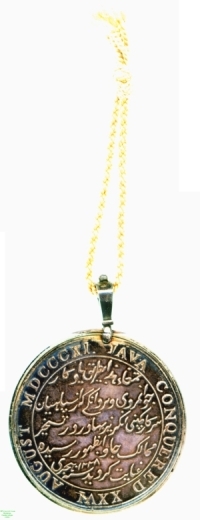
Obverse, a battle scene of the attack on Fort Cornelis

Reverse, a Persian inscription central with a circle and inscription around

Obverse, a battle scene of the attack on Fort Cornelis |

Reverse, a Persian inscription central with a circle and inscription around |
French successes in the Napoleonic Wars left the French Empire at its greatest extent ever in 1810, and due to repeated military failures on the European mainland Britain was forced to look for other fronts on which to engage France and its allies. One such campaign was waged by the British East India Company against French and Dutch possessions in the East Indies. The cornerstone of this campaign was the war in which the Indonesian island of Java was taken, a campaign which began with the landing at and capture of Fort Cornelis. The conquest of the whole island rapidly followed, but it was returned to the Netherlands in the 1816 treaty negotiations that ended the Napoleonic Wars.
For participation in this assault by Indian troops the East India Company had this medal struck at its Calcutta mint. The Persian inscription means: "This medal was conferred in commemoration of the bravery and courage exhibited by the Sepoys of the English company in the capture of the Kingdom of Java, in the year of the Hijra 1228".
The medal was awarded, as this suggests, to Company Sepoys (Indian troops); European combatants had to wait until corresponding bars were awarded to the Military and Naval General Service Medals some thirty-five years later. The East India Company medals were issued unnamed, so the identity of the Bengali or Madras soldier who earnt it is unknown. Lester Watson purchased the medal at some point before 1928.